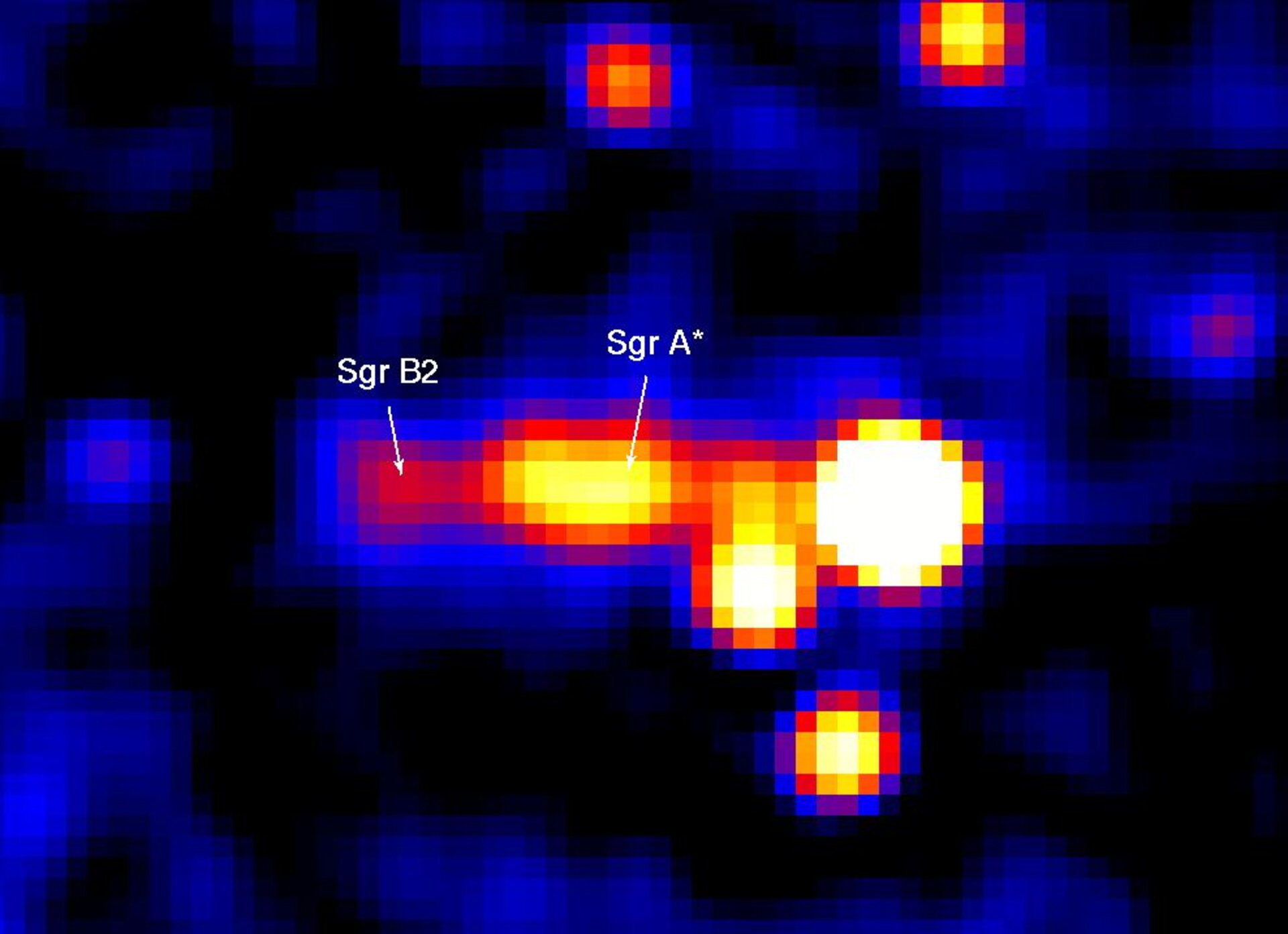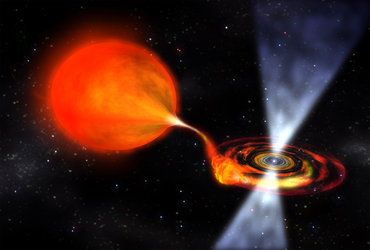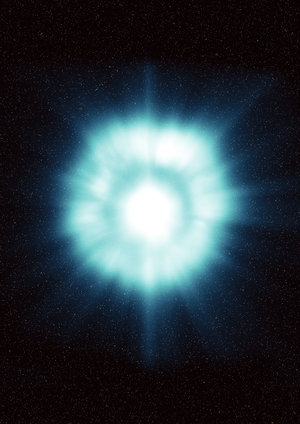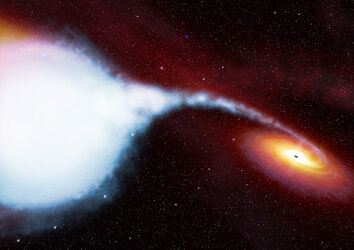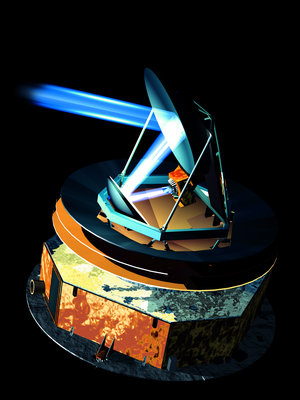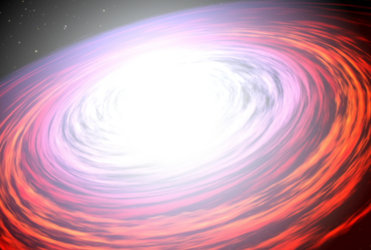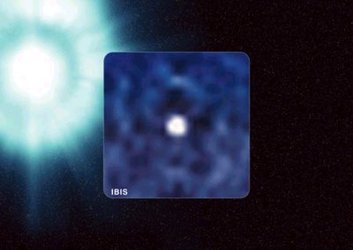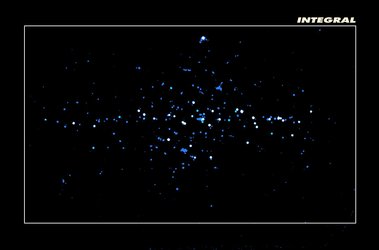Integral rolls back history of Milky Way's super-massive black hole
The centre of our galaxy has been known for years to host a black hole, a 'super-massive' yet very quiet one.
New observations with Integral, ESA's gamma-ray observatory, have now revealed that 350 years ago the black hole was much more active, releasing a million times more energy than at present. Scientists expect that it will become active again in the future.
Most galaxies harbour a super-massive black hole in their centre, weighing a million or even a thousand million times more than our Sun.
Our galaxy too, the Milky Way, hosts a super-massive black hole at its centre. Astronomers call it Sgr A* (pronounced 'Sagittarius A star') from its position in the southern constellation Sagittarius, 'the archer'.
In spite of its enormous mass of more than a million suns, Sgr A* appears today as a quiet and harmless black hole. However, a new investigation with ESA's gamma-ray observatory Integral has revealed that in the past Sgr A* has been much more active. Data clearly show that it interacted violently with its surroundings, releasing almost a million times as much energy than it does today.
This result has been obtained by a international team of scientists led by Dr Mikhail Revnivtsev (Space Research Institute, Moscow, Russia, and Max Planck Institute for Astrophysics, Garching, Germany). As Revnivtsev explains, "About 350 years ago, the region around Sgr A* was literally swamped in a tide of gamma rays."
This gamma-ray radiation is a direct consequence of Sgr A*'s past activity, in which gas and matter trapped by the hole's gravity are crushed and heated until they radiate X-rays and gamma rays, just before disappearing below the 'event horizon' - the point of no return from which even light cannot escape.
The team were able to unveil the history of Sgr A* thanks to a cloud of molecular hydrogen gas, called Sgr B2 and located about 350 light-years away from it, which acts as a living record of the hectic black hole's past.
Because of its distance from the black hole, Sgr B2 is only now being exposed to the gamma rays emitted by Sgr A* 350 years ago, during one of its 'high' states. This powerful radiation is absorbed and then re-emitted by the gas in Sgr B2, but this process leaves behind an unmistakable signature.
"We are now seeing an echo from a sort of natural mirror near the galactic centre - the giant cloud Sgr B2 simply reflects gamma rays emitted by Sgr A* in the past," says Revnivtsev. The flash was so powerful that the cloud became fluorescent in the X-rays and was even seen with X-ray telescopes before Integral. However, by showing how high-energy radiation is reflected and reprocessed by the cloud, Integral allowed scientists to reconstruct for the first time the hectic past of Sgr A*.
The high state or 'activity' of black holes is closely linked to the way in which they grow in size. Super-massive black holes are not born so big but, thanks to their tremendous gravitational pull, they grow over time by sucking up the gas and matter around them. When the matter is finally swallowed, a burst of X-rays and gamma rays results. The more voracious a black hole, the stronger the radiation that erupts from it.
The new Integral discovery solves the mystery of the emission from super-massive but weak black holes, such as Sgr A*. Scientists already suspected that such weak black holes should be numerous in the Universe, but they were unable to tell how much energy and of which type they emit. "Just a few years ago we could only imagine a result like this," Revnivtsev says. "But thanks to Integral, we now know it!"
As for the duration of the latest high state of Sgr A*, 350 years ago, Revnivtsev and his team have evidence that it must have lasted at least ten years and probably much longer. The team also expect that Sgr A* will become bright again in the foreseeable future. Detecting the next burst would provide much needed information about the duty cycle of super-massive black holes.


